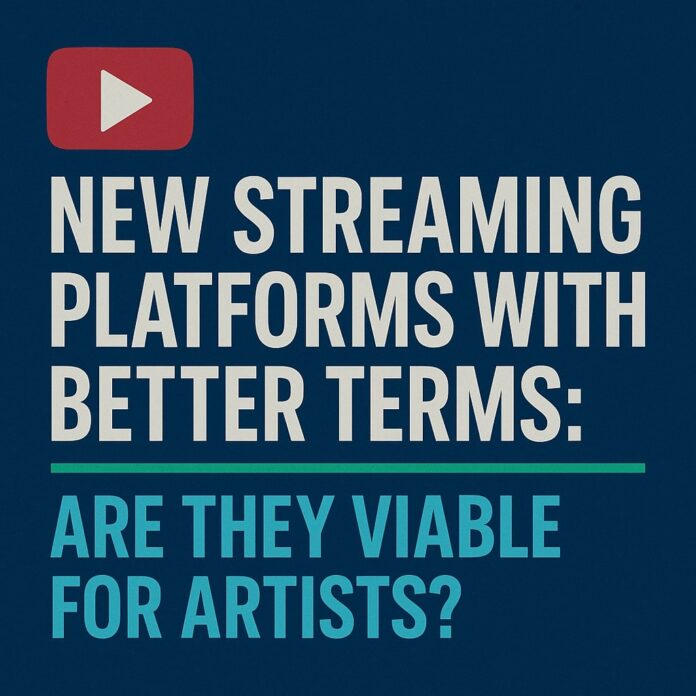
New Streaming Platforms with Better Terms: Are They Viable for Artists?
In the past decade, streaming has reshaped the music industry. While platforms like Spotify, Apple Music, and Amazon Music dominate the market, more and more new streaming platforms are entering the space. Many of these startups position themselves as artist-first alternatives—offering better payout terms, fairer revenue splits, and fan-driven discovery tools.
But a crucial question remains: Are these new platforms viable for artists trying to build sustainable careers?
Why New Streaming Platforms Are Emerging
Traditional streaming platforms have long been criticized for low royalty rates, complex payout structures, and algorithms that favor major label artists. This has created demand for services that promise:
- Higher payouts per stream (sometimes via direct fan support).
- Transparent revenue splits instead of opaque contracts.
- Fan-driven discovery models, so independent musicians aren’t buried beneath superstar catalogs.
- More control over content distribution, pricing, and monetization options.
What Artists Should Evaluate Before Jumping In
While better terms sound great, not every platform is the right fit. Musicians need to weigh several key factors before committing their catalog:
1. Audience Size and Reach
A platform may promise fairer pay, but if its user base is tiny, your potential earnings might still be limited. Consider whether the service is attracting active music fans or struggling to gain traction.
2. Payout Per Stream
Some platforms claim to pay 2–5x more per stream than the industry average. Others rely on direct fan contributions, subscriptions, or even alternative royalty models. Evaluate not just the rate, but also the consistency and reliability of payouts.
3. Flexibility and Control
Do you retain ownership of your masters? Can you set your own prices for downloads, merch, or fan subscriptions? How easy is it to leave the platform if it doesn’t work out?
4. Discoverability and Algorithms
Is the platform investing in recommendation tools, curated playlists, or community-driven features? Do they prioritize independent artists, or will major labels eventually dominate? Fan-driven discovery can help niche artists find their audience, but it needs a strong community behind it.
The Opportunity and the Risk
New streaming services with better artist terms are a welcome evolution in the music landscape. They can:
- Offer higher earning potential for smaller but dedicated fanbases.
- Empower artists with creative freedom and direct relationships with listeners.
- Foster communities where music discovery feels authentic rather than algorithm-driven.
However, they also carry risks:
- Smaller audiences compared to mainstream platforms.
- Uncertain business models—some may not survive long-term.
- Fragmentation of fan engagement if you spread your music across too many services.
Bottom Line: Should Artists Join New Streaming Platforms?
For most musicians, the answer is balance. Established platforms remain essential for reach and visibility, while newer, artist-friendly platforms can supplement income and create stronger fan connections.
The smartest strategy is often a hybrid approach:
- Use the big streaming platforms for exposure.
- Leverage artist-first platforms for monetization, fan subscriptions, and deeper engagement.
As the market evolves, the most successful artists will be those who diversify their presence, stay flexible, and evaluate each new platform with a critical eye toward audience, payouts, flexibility, and discoverability.





















 🔥 Limited Time: Get 25% OFF All Plans - Ends in:
🔥 Limited Time: Get 25% OFF All Plans - Ends in: